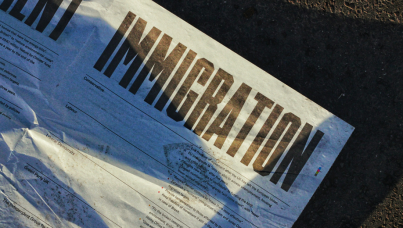A Little Local Problem — A Review Of The May Local Elections
The 2006 local elections represent a clear and embarrassing defeat for Labour. The party was relegated to third place in terms of the "estimated national equivalent vote share", (the generally accepted measure of the major parties' local election performance), with only 26% of the vote. It made a net loss of more than three hundred seats, and controls 18 fewer councils than it did before the elections. While this was not, as some had predicted beforehand, Labour's worst-ever local election performance -- in fact, the 26% share was the same as in 2004 -- it was a very poor one.
Conversely, it was certainly a triumph for the Conservatives, and for their new leader David Cameron, facing his first national test at the ballot box. The party increased the number of councils they control by eleven, made a net gain of three hundred seats, and perhaps more importantly reached the psychologically important 40% of the vote for only the second time since 1982. (The last occasion was in 1992, in the immediate afterglow of John Major's unexpected general election victory.) Perhaps more significant, they seem to have re-established themselves throughout much of England as the default alternative to Labour. Although some way short of the support they would probably need to win a majority at a general election, it is unquestionably a result with which they have reason to be pleased and, even discounting the usual spin and playing down of their hopes, probably somewhat exceeded their expectations.
For the LibDems, however, it was certainly a disappointment. They remain more popular at local than national level, it is true, outperforming their opinion poll ratings by several points to score 27%, but this time they failed to translate that into further gains of councils or councillors despite Labour's collapse. The loss of control in the iconic Islington in particular will have come as a real blow. After the euphoria of the Dunfermline by-election, this is a substantial comedown; Sir Menzies Campbell now has some hard thinking to do.
The results were certainly worse for Labour, and for the Liberal Democrats, than trends in the earlier part of the year would have suggested -- the local elections experts Professors Rallings and Thrasher predicted a month before the election, on the basis of recent council by-elections, that Labour could expect 28% of the national equivalent vote, the Lib Dems 29%, and the Tories only 33%. (Sunday Times, 9 April 2006).
Of course, some at least of the reasons for the depth of Labour's defeat are easy to identify. The controversy over Charles Clarke's handling of the release of foreign prisoners who should have been considered for deportation, the revelation of John Prescott's affair with a civil servant and Patricia Hewitt's controversial speeches to two health service union conferences all unfolded in the last few days before the poll. In these circumstances, avoiding complete meltdown was arguably an achievement in itself. An election fought in such a context may be a totally unreliable indicator of the longer-term state of public opinion -- assuming, of course, that the government is able to quickly resume a more even keel, so that this period of public relations disaster proves only an uncharacteristic exception.
Conservatives have been steadily progressing at local elections since 2001, not only in terms of vote share, which has been higher at each successive election, but in seats held and councils controlled. After the 2004 elections they had passed 8,000 councillors for the first time since 1992, and had a clear lead in councillors over Labour for the first time since the 1980s; the gap has been further widened in 2006. Similarly, each election has added further blue to the map of council control, with a total net increase well over sixty.
Nor can there be any doubting the voters' level of disillusionment with the government. In the monthly Ipsos Political Monitor conducted just before the local elections and published on election day, just 22% of the public said that they were satisfied with the way that the government is running the country, the lowest ever figure for this government, and 68% were dissatisfied. This figure has been steadily mounting: a few weeks after the 2005 general election, 52% of the public said they were dissatisfied; in August it was 54%, by November 57%, then 60% in January and February and 65% in March. Though Labour voting intention showed no signs of plummeting at the same rate, it was always likely that the local elections, notoriously a time for protest voting and "sending a message", would show some reflection of this trend. Indeed, even of those who still say they would vote Labour in a general election, 46% are dissatisfied and only 44% satisfied with the government; but whether that should be taken as evidence of the resilience of the Labour vote under pressure, the current lack of credible alternatives or merely scope for the position to get much worse is perhaps a moot point.
Yet allowing that this is indeed a real defeat for Labour, and that the embarrassments of the final few days before polling can account for only a small part of its depth, we should be wary of reading too much into it as a straw in the wind. After all, the party recovered from a 26% share in the 2004 local elections to win a third term with a share of the vote that was ten points higher a year later. For that matter, Labour's 2001 general election victory with 41% of the vote was an 11-point improvement on the 29% achieved in the disappointing local elections of 2000. In fact, every single Labour local election share during the Blair government has been lower than the party's general election share at the subsequent general election; and every single Tory local election share over the same period higher than any of their three general election shares since 1997. Little surprise -- governments always under-perform in local elections, and this is particularly true of Labour, which is more disadvantaged by the invariably low turnouts.
Furthermore, although the Tory performance is moving in the right direction, the pattern of their resurgence is far from ideal for them. While they made substantial gains in London -- where they have been under-performing over recent years -- they made no inroads in the north of England, areas where they held both council and parliamentary seats when they were winning Commons majorities in the 1980s and early 1990s. The local elections of 1968 have been much mentioned recently as a previous Labour wipeout and precursor to general election defeat, and it is interesting to compare results then and now. In 1968, the Tories took control of Sheffield, and already had majorities in Manchester, Liverpool and Newcastle; today they total just two councillors across those four cities (both in Sheffield). But they are weaker in London too: in 1968, the Tories won 27 of the 32 London boroughs and more than 1,400 council seats there; in 2006 their much-vaunted victory encompassed control of only 14 of the boroughs and fewer than 800 seats. So maybe the Tories are coming - but they still have a long way to come!
Nevertheless, even if Labour's local election defeat should be discounted, or used with caution as a political thermometer, it must not be forgotten that it will have more direct effects. Such events have a huge effect on party morale on both sides, and electoral successes have a momentum of their own in boosting party support -- indeed, the first opinion polls to be conducted after the local elections are showing precisely such a surge for the Tories. This in turn gives fuel to a hostile media who will see encouragement to their questioning of the government. In the longer term, fewer Labour councils means a harder task for government whenever its policies need co-operation from local authorities, and more demoralised local Labour parties may mean fewer or less enthusiastic campaigners and canvassers available at future elections. It would be very easy to fall into a spiral of failure that steadily deepens until defeat at the next general election is inevitable.
But things are by no means yet that bad. The next few months may be critical in deciding whether Labour can hope for a fourth term, or even retain sufficient authority to achieve anything useful in its third one.



